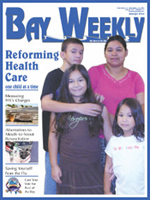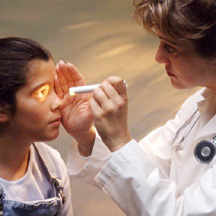
Volume XVII, Issue 37 # September 10 - September 16, 2009 |
 |
 Nurse Practitioners
Nurse Practitioners
A job with a future
by Bonnie Lefkowitz
Lisa Summers, who works for the American Nurses Association and keeps her sailboat in Deale, called after she saw my story on Owensville Primary Care to talk about the growing role of nurse practitioners. Her sources confirmed anecdotal reports from friends and overheard in restaurants and on the supermarket line. In Chesapeake Country, nurse practitioners are turning up in private group practices and in the minute clinics sponsored by stores like CVS pharmacies and Kmart. Baltimore County operates a network of school-based clinics run by nurse practitioners.
Michelle Beauchesne, president of Sandi Shanahan’s professional group (see page 8), the National Association of Pediatric Nurse Practitioners, notes that historically the profession focused on low-income and needy patients but now is branching out to practices serving a broader population.
There are 125,000 nurse practitioners in the U.S. — up 40 percent over the last five years. Studies indicate that the care they provide is generally equal to that of physicians in patient satisfaction and health outcomes, and malpractice claims are extremely low compared with those of other providers. That’s not to ignore the fact that some patients, especially those with complex conditions, may benefit from a physician’s training and experience, or that some simply feel more comfortable with an M.D. after their doctor’s name.
Maryland is home to 2,845 nurse practitioners. This state and others have been criticized because physician involvement in regulatory policy is still required, as is a collaborative agreement between an individual nurse practitioner and a physician specifying periodic review. In addition, some HMOs and insurance companies will not reimburse nurse practitioners directly.
“Behind the scenes there are lots of hurdles to overcome because medical societies don’t want to yield their authority,” Beauchesne says. “But individual nurse practitioners nearly always get high marks from both colleagues and patients. We are good team players, and we are recognized because we are accessible, we provide a quality service and we show patients that we care about them.”